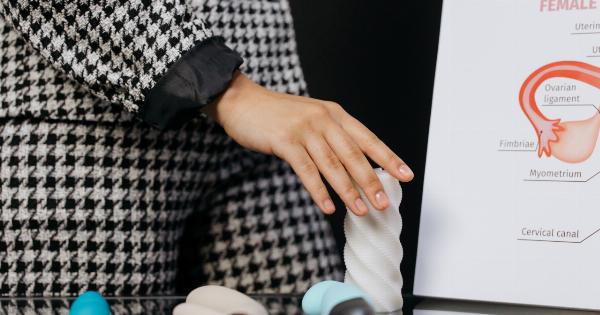Pain during sexual intercourse, also known as dyspareunia, is a relatively common issue that affects many women worldwide. Despite its prevalence, this topic often goes undiscussed due to societal taboos and embarrassment.
It is essential to shed light on this subject, raise awareness, and provide valuable information to help women understand and manage painful sex better.
1. Understanding Dyspareunia
Dyspareunia refers to persistent or recurrent genital pain that occurs just before, during, or after sexual intercourse. This discomfort can be characterized as a burning, aching, or sharp sensation in the vaginal area.
It can also emerge as deep pain within the pelvis or lower abdomen. The severity of pain can range from mild to severe, and it may be categorized as either superficial or deep dyspareunia, depending on its location.
2. Prevalence of Painful Sex
Painful sex is a relatively common concern among women, with a considerable number experiencing it at some point in their lives. According to studies, the prevalence ranges from 8% to 21%, making it a significant issue that should not be overlooked.
However, it is crucial to note that dyspareunia can affect women of all ages, regardless of whether they are sexually active or not. It can arise at any stage of life, including during adolescence, after childbirth, or during menopause.
By understanding the potential causes of painful sex, women can seek appropriate medical advice and therapy to improve their sexual well-being.
3. Physical Causes of Dyspareunia
Painful sex can be attributed to various physical causes. These may include:.
a) Vaginal Infections: Conditions such as yeast infections, bacterial vaginosis, or sexually transmitted infections (STIs) can lead to inflammation and irritation of the vaginal tissues, causing discomfort during intercourse.
b) Vaginal Dryness: Insufficient lubrication, often due to hormonal changes (such as menopause) or certain medications, can result in friction and pain during penetration.
c) Vaginismus: Vaginismus is a condition characterized by involuntary contractions of the vaginal muscles, making penetration painful or impossible.
d) Endometriosis: Endometriosis is a condition in which the tissue lining the uterus grows outside of it, causing pain during sexual intercourse.
e) Pelvic Inflammatory Disease (PID): An infection of the female reproductive organs can lead to chronic pelvic pain, including pain during intercourse.
f) Uterine Fibroids: Noncancerous growths in the uterus can cause discomfort during sexual activities, particularly if they are located near the cervix or lower uterus.
These are just a few examples of the physical causes that can contribute to dyspareunia. Each case is unique, and it is advisable to consult a healthcare professional for an accurate diagnosis.
4. Psychological Factors and Painful Sex
Beyond physical causes, psychological factors can also play a significant role in experiencing pain during sex.
Emotional concerns, such as anxiety, depression, stress, history of abuse, or relationship issues, can impact a woman’s sexual well-being. Feeling tense, nervous, or having negative beliefs about sex can lead to vaginal tightness, reduced lubrication, and increased discomfort.
Addressing and managing these psychological factors may involve seeking therapy with a qualified mental health professional or couples counseling to improve communication and intimacy.
5. Seeking Professional Help
Experiencing pain during sex should never be ignored or accepted as an inevitable part of a woman’s life. It is crucial to seek help from healthcare professionals who specialize in sexual health or reproductive medicine.
These specialists can provide a comprehensive evaluation, diagnose any underlying causes, and offer appropriate treatment options.
A consultation may involve a thorough medical history review, physical examination, and additional tests to narrow down the potential causes.
Based on the diagnosis, treatment recommendations may vary, ranging from medications or hormonal therapy to physical therapy, counseling, or surgical interventions in some cases.
6. Open Communication
Open and honest communication is vital to address painful sex within relationships. It is essential for both partners to establish trust and understanding to address the issue effectively.
Creating a safe space for discussions regarding feelings, desires, and concerns can help foster intimacy and reduce anxiety surrounding sexual activity.
7. Lifestyle Modifications
In addition to medical interventions, certain lifestyle modifications can help alleviate pain and improve sexual well-being:.
a) Lubricants: Using water-based lubricants during sexual activity can reduce discomfort caused by vaginal dryness.
b) Foreplay and Relaxation Techniques: Engaging in extended foreplay and relaxation techniques, such as deep breathing or meditation, can help reduce anxiety and increase arousal.
c) Pelvic Floor Exercises: Strengthening the pelvic floor muscles through exercises known as Kegels can enhance sexual function and reduce pain.
d) Positioning: Experimenting with different sexual positions to reduce discomfort and find the most comfortable option for both partners.
8. Prevention and Self-Care
While not all causes of painful sex can be prevented, there are certain self-care measures that can contribute to overall sexual health:.
a) Safe Sexual Practices: Engaging in safe sexual practices, including using condoms and getting regular STI screenings, helps prevent infections that could lead to pain during intercourse.
b) Good Hygiene: Maintaining good genital hygiene helps prevent infections and reduce discomfort during sexual activity.
c) Regular Sexual Activity: Being sexually active can help maintain vaginal elasticity and blood flow, potentially reducing the risk of painful intercourse.
9. Importance of Education and Awareness
Raising awareness about painful sex is essential to empower women to seek help, reduce stigma, and improve overall sexual health and well-being.
It is vital to break the silence, provide accurate information, and create a supportive environment where women can openly discuss their concerns.
10. Conclusion
Painful sex is a prevalent issue that affects many women, both physically and psychologically.
Understanding the potential causes, seeking professional help, and engaging in open communication with partners are crucial steps to manage and overcome this challenge. By destigmatizing and addressing dyspareunia, women can regain control of their sexual lives, enhancing their overall quality of life and well-being.



























